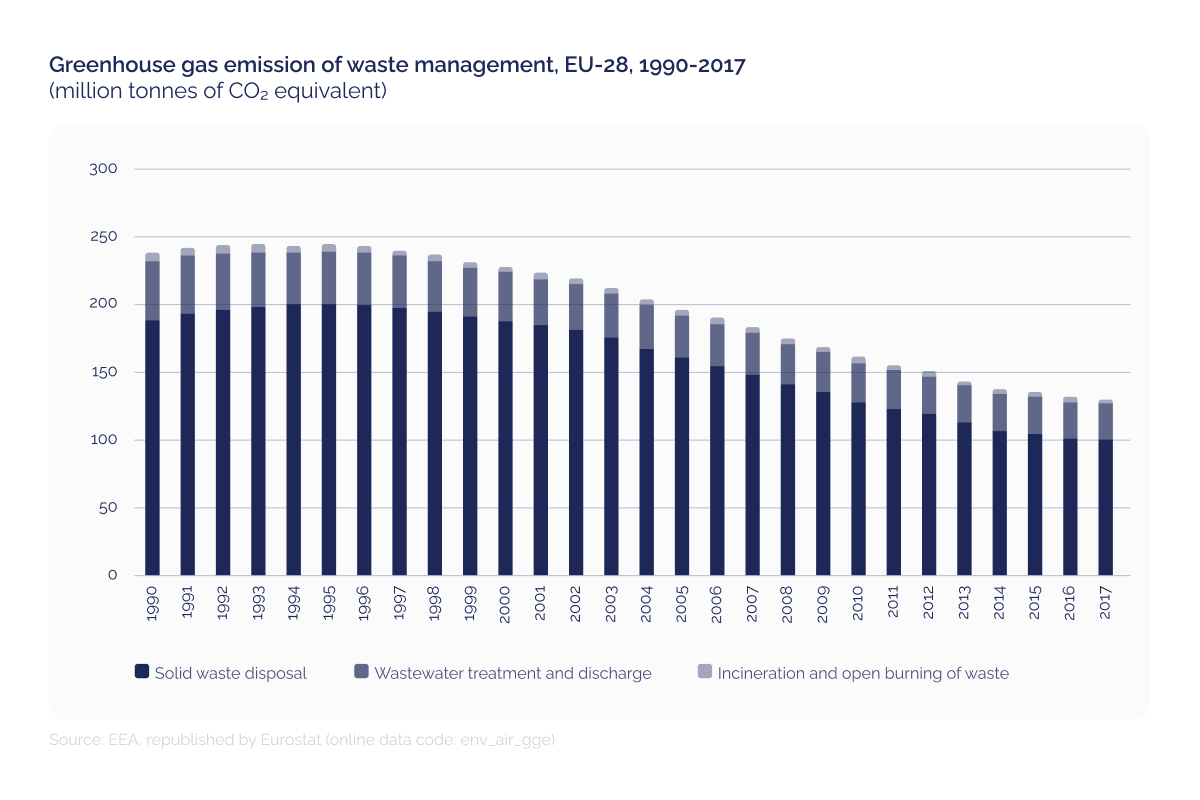In today's world, understanding and addressing carbon footprints is vital for businesses striving to be environmentally responsible. While many organisations are taking steps to reduce their emissions, there are often hidden sources that contribute significantly to carbon footprints. This blog will delve into these overlooked emissions, highlighting their importance and providing strategies for businesses to identify and address them. By doing so, businesses can achieve net-zero emissions and embrace sustainability for a greener future.
 A close up of a Red-eyed tree frog sitting on a leaf.
A close up of a Red-eyed tree frog sitting on a leaf.
Understanding carbon footprints in business operations
To begin, let's clarify what a carbon footprint means in the context of business operations. A carbon footprint measures the total greenhouse gas emissions produced by an organisation across its entire value chain. This includes both direct emissions from on-site activities and indirect emissions resulting from purchased electricity, transportation, and other business-related activities.
When assessing carbon footprints, emissions are categorised into three scopes. Scope 1 emissions encompass direct emissions from sources owned or controlled by the organisation, such as on-site fuel combustion. Scope 2 emissions involve indirect emissions owned resulting from purchased electricity, heat, or steam. These scopes mainly focus on emissions directly associated with the organisation's operations.
However, it is within Scope 3 emissions that most hidden emissions contributing significantly to the carbon footprint reside. Scope 3 emissions are indirect emissions not owned that occur from activities related to the organisation but outside their direct control, including supply chains, business travel, employee commuting, and product use. These emissions often account for the largest portion of an organisation's carbon footprint, highlighting the importance of addressing hidden emissions and focusing on comprehensive sustainability strategies encompassing the entire value chain.
By recognising the significance of Scope 3 emissions and actively identifying and reducing them, businesses can make substantial progress towards achieving their sustainability goals and significantly decrease their overall carbon footprint.
Read more: Uncovering the impact of Scope 3 emissions
Overlooked sources of emissions
As mentioned, most overlooked sources of emissions fall within Scope 3 emissions, such as supply chain emissions, waste management, and employee commuting. However, there is also an important overlooked emissions source in Scope 2—building energy consumption.
1. Energy consumption in buildings
Energy usage in buildings often goes unnoticed when calculating carbon footprints. Inefficient heating, cooling, and lighting systems can contribute significantly to emissions. Furthermore, poor insulation and ventilation can lead to energy losses, further increasing the carbon footprint.
Buildings are responsible for a significant portion of global energy consumption, comprising approximately 30% of the total. Furthermore, they contribute to 26% of global energy-related emissions. Among these emissions, 8% can be attributed to direct emissions within buildings, while the remaining 18% stems from the production of electricity and heat used in buildings. These statistics highlight the substantial impact that building operations have on energy consumption and emissions worldwide.
2. Supply chain emissions
The supply chain is a commonly overlooked area that contributes to emissions. It involves not only transportation-related emissions but also encompasses raw material extraction, manufacturing processes, and logistics. Addressing these emissions is crucial for a comprehensive carbon footprint assessment.
Read more: The power of sustainability: Why investing in sustainability drives faster company growth
To achieve sustainability goals, supply chains offer significant potential for improvement. According to McKinsey, the social and environmental costs associated with a company's supply chain outweigh those of its own operations. In fact, supply chain impacts contribute to over 80% of greenhouse gas emissions and over 90% of the overall impact on air, land, water, biodiversity, and geological resources. These figures underscore the critical importance of addressing sustainability within supply chains and implementing measures to reduce their environmental and social impacts.
3. Waste management
According to the European Commission, waste is the fourth largest source sector of emissions, accounting for 3% of total greenhouse gas emissions in 2017. Improper waste disposal methods can generate substantial emissions. Landfilling and incineration contribute to greenhouse gas emissions and air pollution. By adopting sustainable waste management practices, such as recycling and composting, businesses can significantly reduce their carbon footprints.
 Graph showing greenhouse gas emission of waste management, EU-28, 1990-2017.
Graph showing greenhouse gas emission of waste management, EU-28, 1990-2017.
4. Employee commuting and business travel
Employee commuting and business travel can surprisingly account for a significant portion of a business’ carbon footprint. The emissions associated with daily commuting and frequent business trips can quickly add up. Encouraging alternative transportation options, remote work, and video conferencing can help mitigate these emissions.
Read more: How do carbon footprints work?
Successful case studies
Let's explore a few real-life examples of businesses that have successfully identified and reduced hidden emissions.
Patagonia—outdoor apparel
Patagonia, the renowned outdoor apparel company, has long been committed to sustainability. In its journey to reduce its carbon footprint, it identified supply chain emissions as a significant contributor. Patagonia implemented a rigorous screening process for its suppliers, evaluating not only the quality of their products but also their environmental and social practices.
 Mountain rock landscape with the Patagonia company logo.
Mountain rock landscape with the Patagonia company logo.
By partnering with suppliers who shared its commitment to sustainability, Patagonia optimised its supply chain and reduced emissions associated with raw material extraction, manufacturing processes, and transportation. This proactive approach helped it achieve substantial carbon footprint reductions and maintain its position as a sustainability leader in the industry.
Read more: Patagonia: investing in a sustainable future
Etsy—online marketplace
Etsy, the popular online marketplace for handmade and vintage goods, has made significant strides in addressing hidden emissions through its commitment to sustainability. Recently, the platform introduced the Etsy Sustainability Attributes Policy. This policy encourages sellers on the platform to provide accurate and detailed information about the sustainability attributes of their products, allowing buyers to make more informed and eco-conscious purchasing decisions.
Under this policy, Etsy sellers disclose information about their products' sustainability features, such as organic or recycled materials, local sourcing, and fair trade practices. By transparently sharing this information, Etsy empowers buyers to support sellers who align with their sustainability values. Additionally, Etsy has implemented measures to reduce its own environmental impact, including renewable electricity goals and waste reduction strategies. Through its Sustainability Attributes Policy, Etsy drives positive change and encourages eco-friendly practices in the online retail industry.
 Landscape of Adirondack Park with the Etsy company logo.
Landscape of Adirondack Park with the Etsy company logo.
Strategies for identifying and reducing hidden emissions
To effectively address hidden emissions, businesses should implement the following strategies:
1. Conduct a comprehensive carbon footprint assessment
It is crucial to thoroughly evaluate all emissions sources within a business, including energy usage, supply chains, waste management, and transportation. This assessment is the first step towards reducing a business’ carbon footprint. It will provide an emissions baseline and help identify areas for improvement.
2. Implement energy-efficient measures in buildings and operations
Businesses can invest in energy-efficient technologies, such as LED lighting, smart heating, ventilation, and air conditioning (HVAC) systems, and energy management systems. By optimising energy consumption in buildings and switching off systems/lights that are not in use, businesses can significantly reduce their carbon footprints.
3. Engage suppliers and optimise the supply chain
Collaborate with suppliers who share a commitment to sustainability. Encourage sustainable practices throughout the supply chain, such as using eco-friendly materials, reducing transportation distances, and promoting efficient logistics.
4. Adopt sustainable waste management practices
Businesses should establish effective waste management systems, including recycling programmes, composting facilities, and waste reduction initiatives. This includes evaluating product packaging throughout the supply chain. By diverting waste from landfills and reducing emissions from waste disposal, businesses can contribute to a more sustainable future.
5. Promoting remote work and alternative transportation options
Embrace remote work policies to reduce employee commuting. Encourage the use of public transportation, cycling, and walking. Provide incentives for sustainable commuting options and promote awareness among employees about the environmental impact of their travel choices. Also, reduce unnecessary business travel and opt for online meetings instead.
Become carbon neutral with DGB Group
Unveiling and addressing hidden sources of emissions in business operations is crucial for achieving sustainability goals and minimising carbon footprints. By focusing on commonly overlooked areas such as energy consumption, supply chains, waste management, and employee commuting, businesses can make significant progress in reducing their environmental impact.
It is essential for organisations to take proactive steps, conduct thorough assessments, and implement sustainable practices to contribute to a greener future. By embracing sustainable initiatives and addressing hidden emissions, businesses can play a significant role in reducing their environmental impact. At DGB Group, we pride ourselves on offering accessible and transparent solutions for businesses, investors, and individuals who share our passion for nature conservation.
 A man working on a tree nursery in Kenya as a part of DGB Hongera Reforestation Project.
A man working on a tree nursery in Kenya as a part of DGB Hongera Reforestation Project.
Partnering with DGB Group offers organisations a powerful opportunity to leverage high-quality carbon credits. By utilising these credits, businesses can effectively offset their carbon emissions and make a tangible impact in the fight against climate change and biodiversity loss. Our top-tier carbon credits, backed by rigorous standards and robust verification processes, ensure that organisations contribute to meaningful and credible emissions reduction projects while benefitting their business. Together, we can create a sustainable future by supporting projects that not only mitigate carbon emissions but also deliver co-benefits such as biodiversity conservation and community development. Join us in making a difference and embracing the transformative potential of carbon credits.









